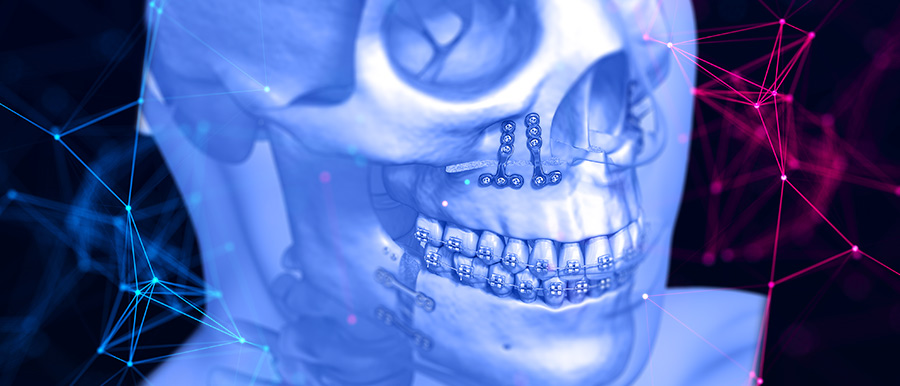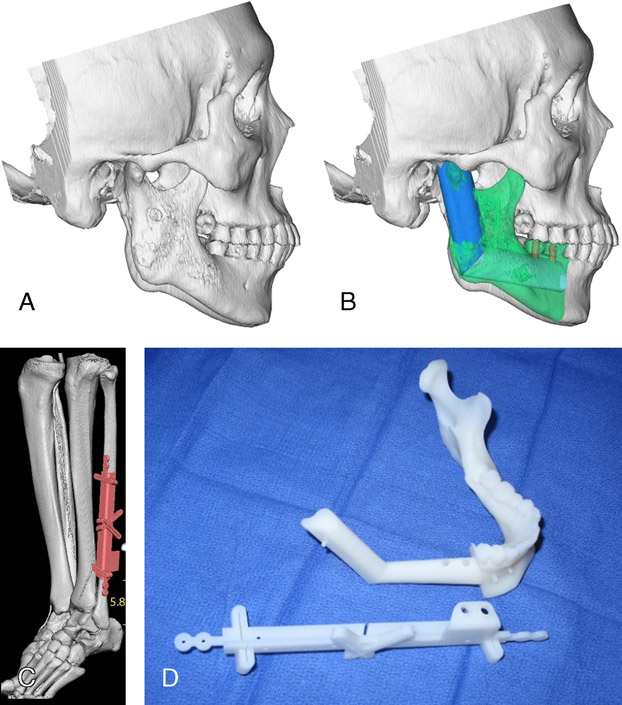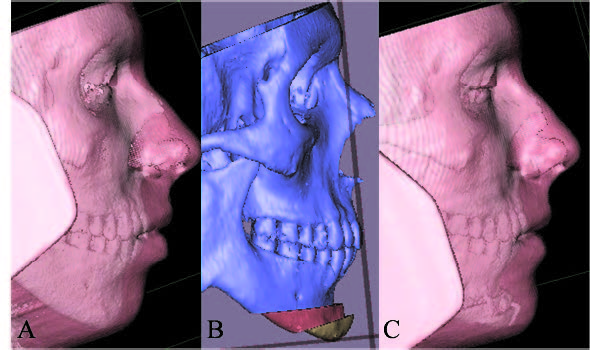Computer-Assisted Craniomaxillofacial Surgery System

Innovation and technology are rapidly progressing and computer-assisted surgeries (CAS) are gaining worldwide importance.
AO North America faculty have been actively engaged in research and education on this subject, and multiple studies exploring CAS in craniomaxillofacial surgery have shown these systems could have incredible implications for clinical outcomes and cost efficacy.
What is CAS?
CAS is a term that includes any sort of surgical planning or execution utilizing software development, advanced imaging, analysis, planning, or rapid prototyping.
New technologies are quickly joining or replacing traditional diagnostics and treatment planning, but they must first demonstrate clinical and statistically significant results.
For example, computer assistance allows surgeons to rapidly switch between various diagnostic image data such as CT, MRI, and Ultrasound, and can provide the ability to perform simulations on superimpose images 1.
The CAS workflow dogma has been presented here as suggested by Edwards SP 2010 et al 2.
Benefits of CAS in CMF surgery
CAS technology offers substantial improvements regarding functional and aesthetic aspects in a variety of surgical procedures.
Augmented reality principles in computer-aided navigation systems result in reduced time and costs of surgery. Ewers et al 3 shows us an operating room utilizing CAS in the image below.
The surgical planning phase consists of a three-dimensional image generated from a high-resolution CT scan and loaded into CAD/CAM software. One of these examples has been demonstrated by Levine JP et al 4
The computer-generated bony reconstruction improves the ability to plan and guide cutting of the bone and, acting as splints, can precisely reposition the bone and direct plate placement.
During the surgical phase, instrument navigation tools offer the surgeon interactive support through operation guidance and control of potential dangers.
Below is another example of standard orthognathic surgical planning utilizing CAS proposed by Olszewski R et al 2011 5 after conducting a systematic review of 292 articles. Their results showed that surgical engineering plays a pivotal role in the development and improvement of cranio-maxillofacial surgery procedures.
Interested in learning more about computer-assisted craniomaxillofacial surgery?
Consider joining us at the AO CMF NA Course, Computer Aided Maxillofacial Surgery (with Human Anatomical Specimens)
References
- Markiewicz MR, Bell RB. Modern concepts in computer-assisted craniomaxillofacial reconstruction. Current opinion in otolaryngology & head and neck surgery. 2011 Aug 1;19(4):295-301.
- Edwards SP. Computer-assisted craniomaxillofacial surgery. Oral and maxillofacial surgery clinics of North America. 2010 Feb 1;22(1):117-34.
- Ewers R, Schicho K, Undt G, Wanschitz F, Truppe M, Seemann R, Wagner A. Basic research and 12 years of clinical experience in computer-assisted navigation technology: a review. International journal of oral and maxillofacial surgery. 2005 Jan 1;34(1):1-8.
- Levine JP, Patel A, Saadeh PB, Hirsch DL. Computer-aided design and manufacturing in craniomaxillofacial surgery: the new state of the art. Journal of Craniofacial Surgery. 2012 Jan 1;23(1):288-93.
- Olszewski R. Surgical engineering in cranio-maxillofacial surgery: a literature review. Journal of Healthcare Engineering. 2012 Mar 1;3(1):53-86.






